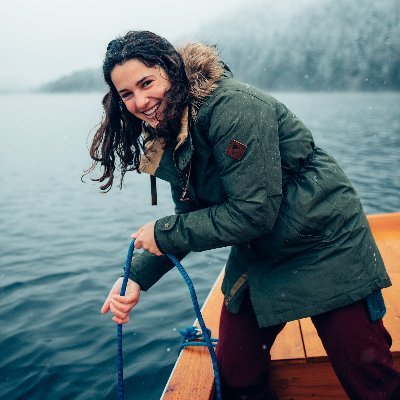Margaux Mathieu-Resuge, ecologist, working on the quality of sardine food

Dr Margaux Mathieu-Resuge is an ecologist working on trophic ecology, what animals are eating. She has begun in November 2022 the GREASY project at the LEMAR laboratory (Université de Bretagne Occidentale).
BIENVENÜE team: Hello Margaux, can you tell how you came to work on trophic ecology?
Margaux Mathieu-Resuge: I am interested in trophic relations between animals, in order to better understand their influences on their physiological performances, that is, the impact of food quality on their health and development. I did my PhD thesis on two bivalve species from a Mexican coastal lagoon. I tried to understand whether difference in food resources of the bivalve species was the reason of the bivalve stock variation. Then, I worked in Austria on semi-aquatic insects living in lakes at the water-sediment interface. They are qualitative food resources for the riparian insect-eating predators. I quantified and qualified nutrient flux between aquatic and terrestrial ecosystems through these insects.
What will you investigate with the GREASY project?
I will continue to work on food quality, this time on the case of sardine in the Iroise sea. Sardine population off the coast of Finistère have reduced in size by 3 or 4 cm per fish in the last years. First studies show that this change is due to a decrease in food quality. In parallel, the Parc Naturel Marin d’Iroise has observed a difference in the plankton composition. I want to know more on how this change of primary productors influence transfer of essentiel nutrients, here fatty acids, for sardine larvae. It is important to understand the influence of changes at the basis of food chains, as there are repercussions on the entire food chain and even up to human health.
During the two years of the GREASY project, I will first characterize taxinomic compounds of zoo- and phytoplankton and their nutritional value according to size class. I will then try to precisely characterize the origin of fatty acides found in the sardines, via biochemical and isotopic analysis, in order to understand where the nutrient molecules come from.
Why is it important to realize this project at the LEMAR laboratory?
At the LEMAR there are several unique expertises, which are necessary for the good implementation of my research project. LEMAR researchers first are experts of lipid coumpounds analysis for the marine environnment. I will be able to use the LIPIDOCEAN platform of the laboratory to do lipid analysis, and also to use the PSO plaform to conduct isotopic analysis in order to trace lipid transfers between primary producers and sardines.
I will also benefit from the lab collaborations, with IFREMER reserchers who are specialists of sardine larvae. I will collaborate with the Parc Naturel Marin d’Iroise, which is monitoring plankton population in the Iroise Sea, to share data. We will also work with the fishery committee of Finistère, in order to better define the plankton-sardine link in the Iroise Sea. Together, we would like to construct a transversal teaching unit between the Institut Universitaire Européen de la Mer (IUEM) and the marine highschool of the Guilvinec to diversify sample acquisitions, but also to create a dialogue between future scientists, managers and users of the sea.
You are trying to minimize the impact of your project on the environment. Which actions do you implement?
I am trying to reduce the carbon footprint of my project in multiple ways. With the support of the ISBlue graduate school, I plan to compare the feasability of sample acquisition via sailing and motor boat. To do so, one of my sampling collection in the Iroise Sea off the Brest coast will be done on board of the Skravik catamaran and another on board of the Albert Lucas, a motor boat commonly used by my laboratory. My team is also coordinating with local fishermen, who are giving adult sardines they have catched, in order to reduce the number of sea trips and boats. Finally, the little plastic equipment used in the laboratory for sampling analysis is collected and recycled within the framework of the Interreg project “Preventing Plastic Pollution” the LEMAR is participating to.
Thank you Margaux!